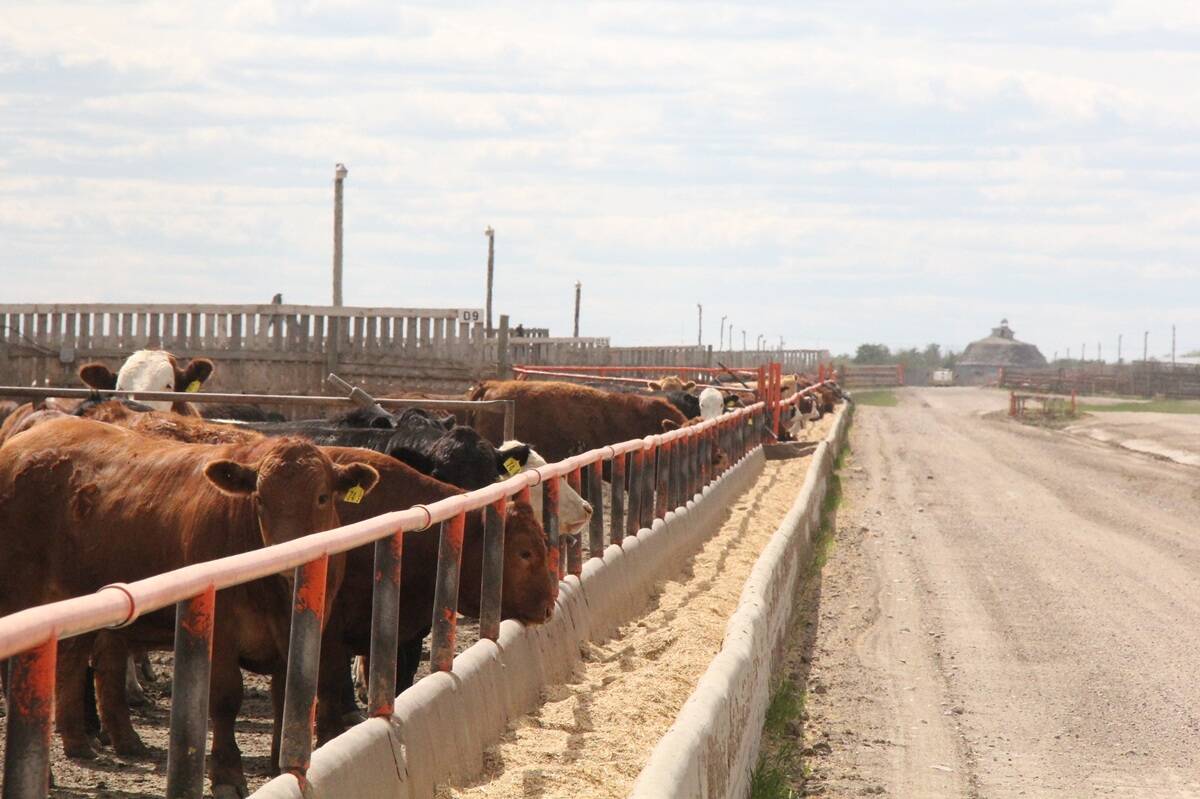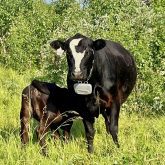In Canadian beef cattle systems, increased efficiency accompanied by higher levels of performance is largely dependent on the female herd delivering live calves within a desired time frame.
Most commercial operators retain and develop heifers for potential replacements. When adding numbers and quality to the herd, these yearlings become a critical piece of the puzzle. Success depends heavily on heifers’ reproductive maturity. Those conceiving early in their initial breeding season have a much higher chance of experiencing longevity in the maternal herd.
Jose Alcivar is a graduate student and researcher at the University of Saskatchewan. Under the guidance of Dr. Dinesh Dadarwal, assistant professor in the department of large animal clinical sciences, Alcivar is using reproductive tract scoring to help identify these types of heifers and subsequently following them through to confirm pregnancy results.
Read Also

Unwinding the fibre in feedlot cattle diets
Research into how barley rolling method and undigestible NDF levels affect animal performance and digestive health in finishing diets
“While (reproductive tract scoring) has been around for quite a while, a likely reason it hasn’t caught on as much as it could is a lack of awareness of the economic impact it can have,” says Alcivar. “Plus, it’s an extra activity and labour to deal with prior to breeding when other factors are vying for our attention.”
Numbers, scoring and results
The research trial began in May 2023 with 70 mixed breed heifers, aged 12 to 14 months. Reproductive tract scoring was completed in May, followed by synchronization and artificial insemination in June. Twenty-one days of natural bull service completed the breeding season.
The three main scoring criteria considerations recommended by Dr. Dadarwal were the presence of a corpus luteum, the thickness of the uterine horns and the texture of the reproductive tract.
Scoring was done by rectal palpation using the standard North American numbering system of one to five. A score of one signified weakness with immature uterine horns, smaller ovarian dimensions and zero ovarian structure. Increasing numbers implied higher maturity levels with a score of five featuring larger uterine horns with good tone, bigger ovarian dimensions, more advanced follicles and a present corpus luteum. Researchers also recorded age and body weight.
Fifty heifers scoring four or five remained in the program while all lower-scoring animals were culled.

Pregnancy checks were performed on August 4 after the synchronization and artificial insemination period resulting in a 62 per cent conception rate. On September 12, pregnancy checks on the remaining animals confirmed a 90 per cent pregnancy rate.
“Pregnancy and conception rates were compared to the May (reproductive tract) scoring,” Alcivar says. “Our focus was to show the value of reproductive tract scoring in a breeding strategy. Even though it’s not a conclusive statistical evaluation as it’s quite a small trial, it’s something we are looking at deeper, working to find more efficient ways to use reproductive programs.”
Evaluating longevity
Alcivar believes while the data gathered from the trial is size-limited, it shows reproductive tract scoring is more important than strictly basing selection parameters on phenotypic evaluations. Producers with 50 cows likely know each individual but with bigger volumes, the picture becomes fuzzy.
“It’s much more challenging to understand ‘why am I keeping these heifers?’ Is it simply because they look good? But their mothers, aunts or siblings might have only stayed in the herd for two years. If we’re not using the data at our disposal but relying strictly on phenotypes, we’re missing out on value.”
Bloodlines continuing to perform for 10 or more years should be a fertility and reproduction goal. When producers run stricter criteria consistently fitting their operation’s reality, they’ll have a much better opportunity to add maternal longevity. First-cycle calvers with superior fertility traits have a stronger likelihood of delivering offspring with the same qualities and should be part of a first-cut selection.
Strengthening criteria
Alcivar explains genetic value is becoming more critical, especially in these times of higher prices. Stricter selection criteria are necessary to ensure stronger long-term returns.
“If, by using tighter criteria, we achieve 90 per cent conception, why would we keep more animals, realize only 80 per cent conception and be satisfied?” he asks.
Size and age variances may make a huge difference in both sexual maturity and fertility. When targeting 14 or 15 months of age, sometimes a lighter animal might be the better choice.
“It’s important to think about what to include in selection criteria,” he says. “Even now when prices are record high, we don’t want to keep something that won’t get us somewhere. Are we keeping good-looking animals, or heifers we can count on to be high-probability replacements who turn into mature cows consistently producing heavy calves?”
Alcivar and the Livestock and Forage Centre of Excellence plan to repeat and improve on their research in upcoming years, looking for more efficient reproductive programs. In addition to reproductive tract scoring, they plan to incorporate more artificial intelligence into estrus detection for better artificial insemination timing and improved pregnancy rates.
“The cost of feeding and developing a replacement candidate through the winter is even higher if she doesn’t conceive or is a late calver due to immaturity. By using (reproductive tract scoring), it can mean extra money in our pockets.”
The current group of heifers will be kept and evaluated for longevity in the centre’s herd. Alcivar says they want to show reproductive tract scoring is a realistic, available tool that can bring producers closer to their end goal.
“I advocate it’s better to know what we’re dealing with than to go into replacement selection blank or with only phenotypes to base decisions on.”
















